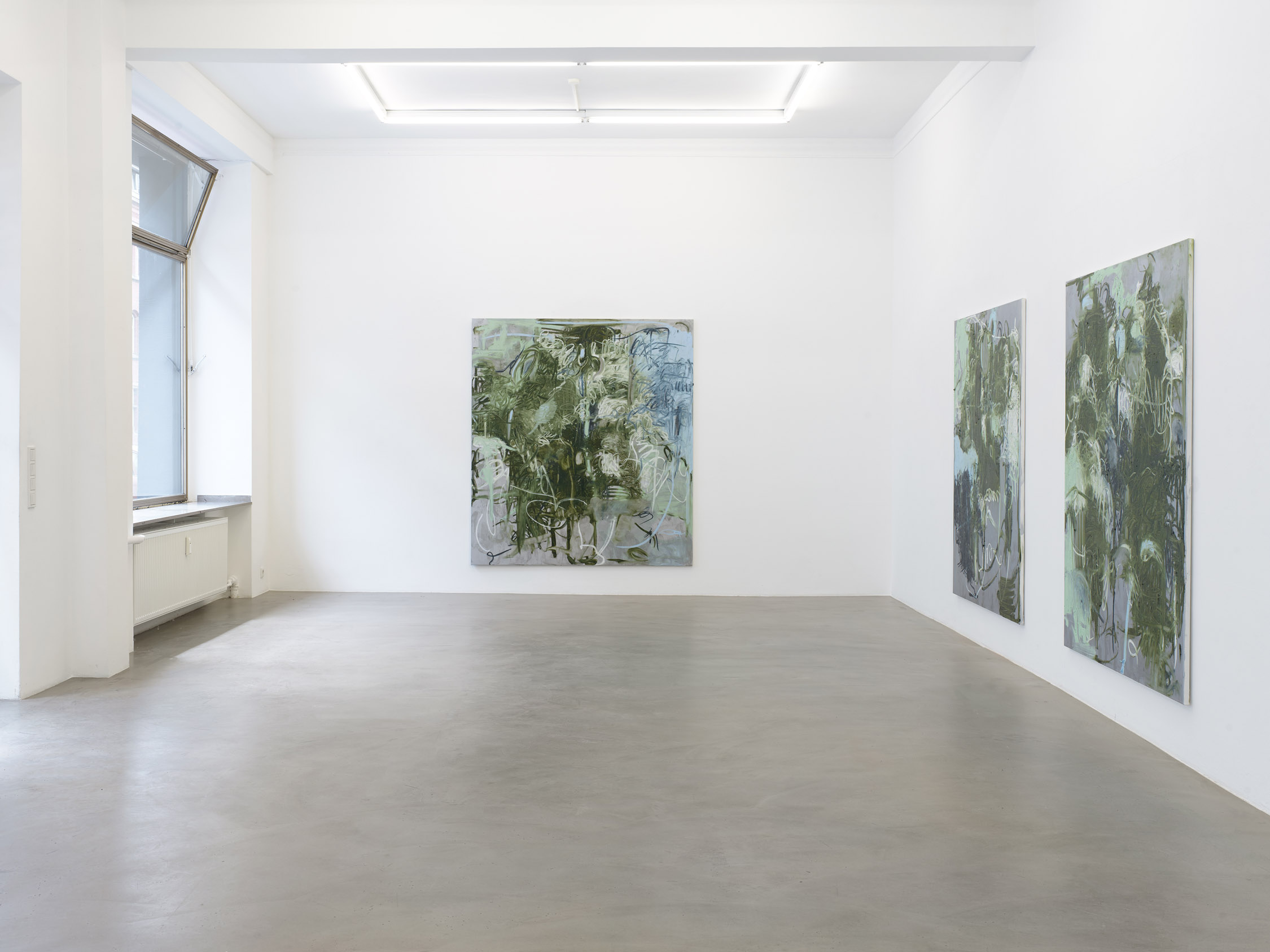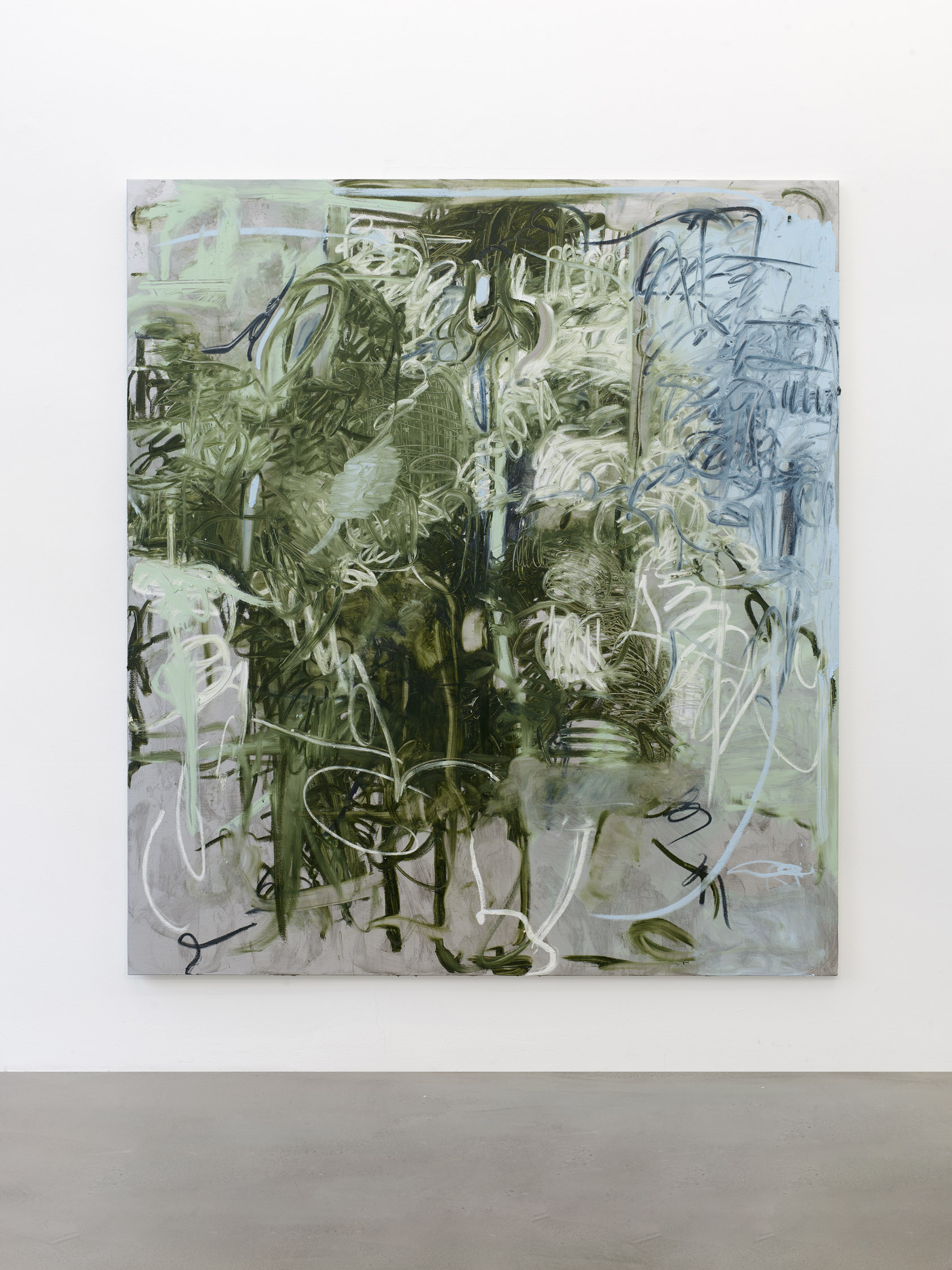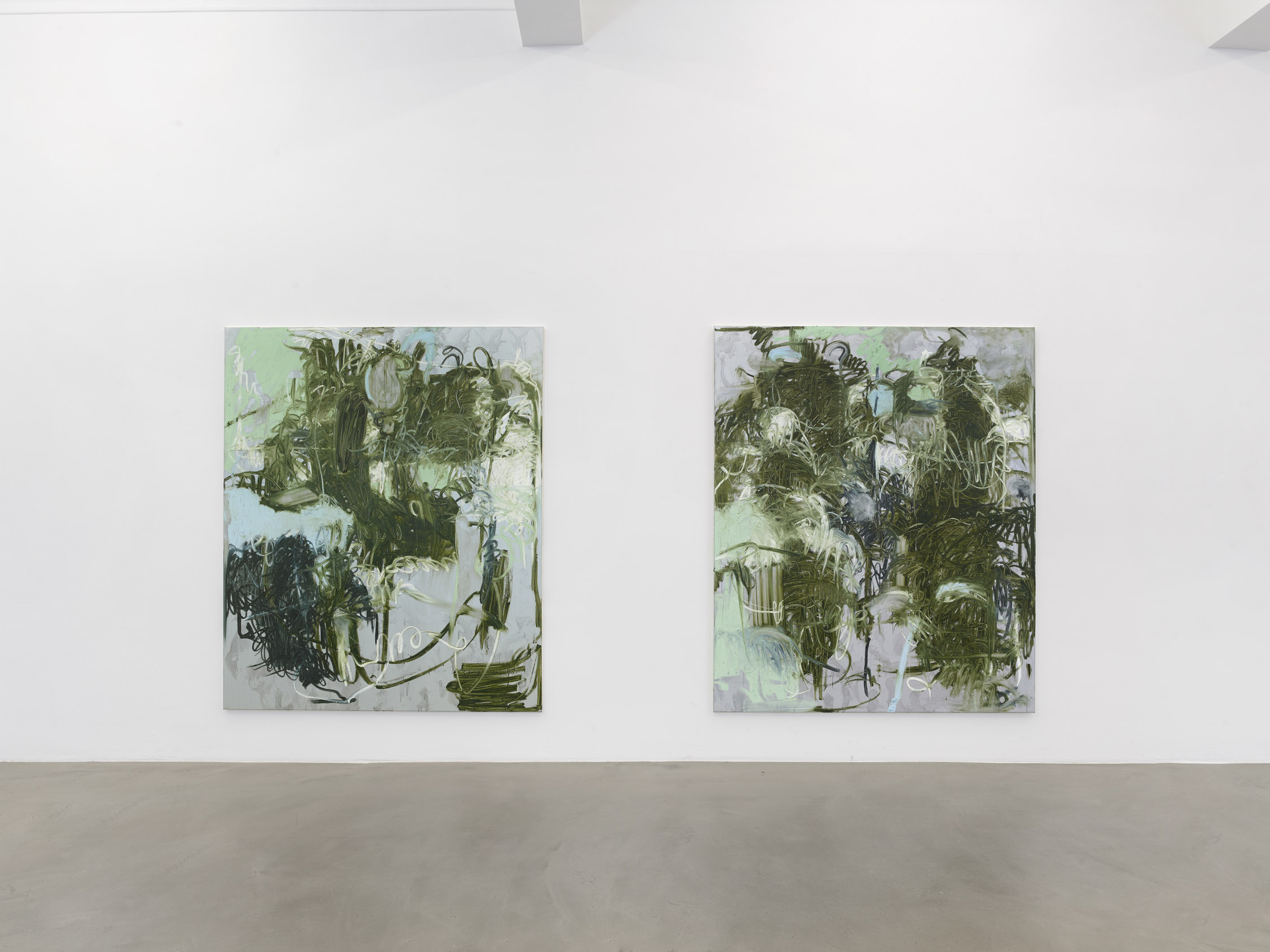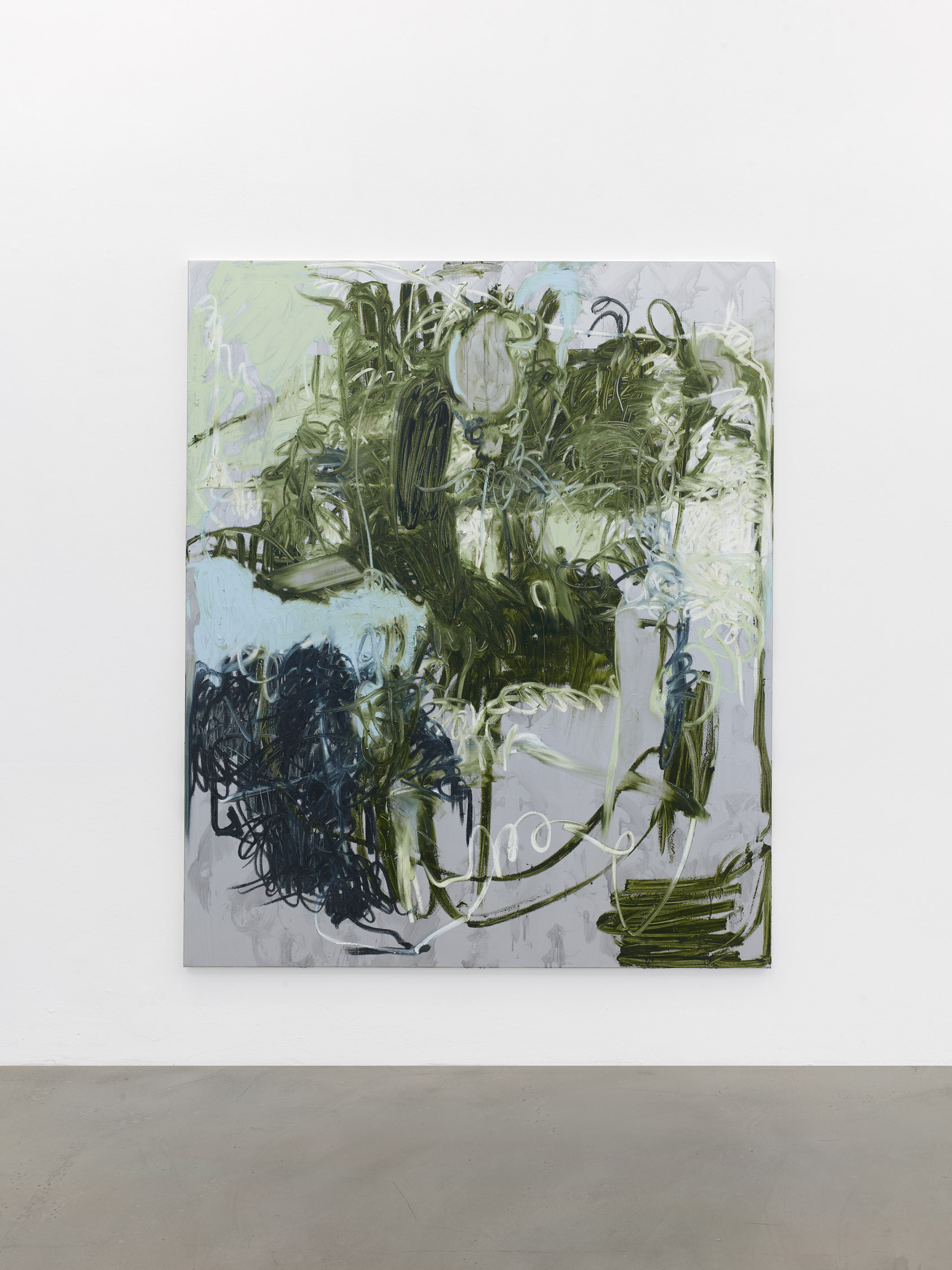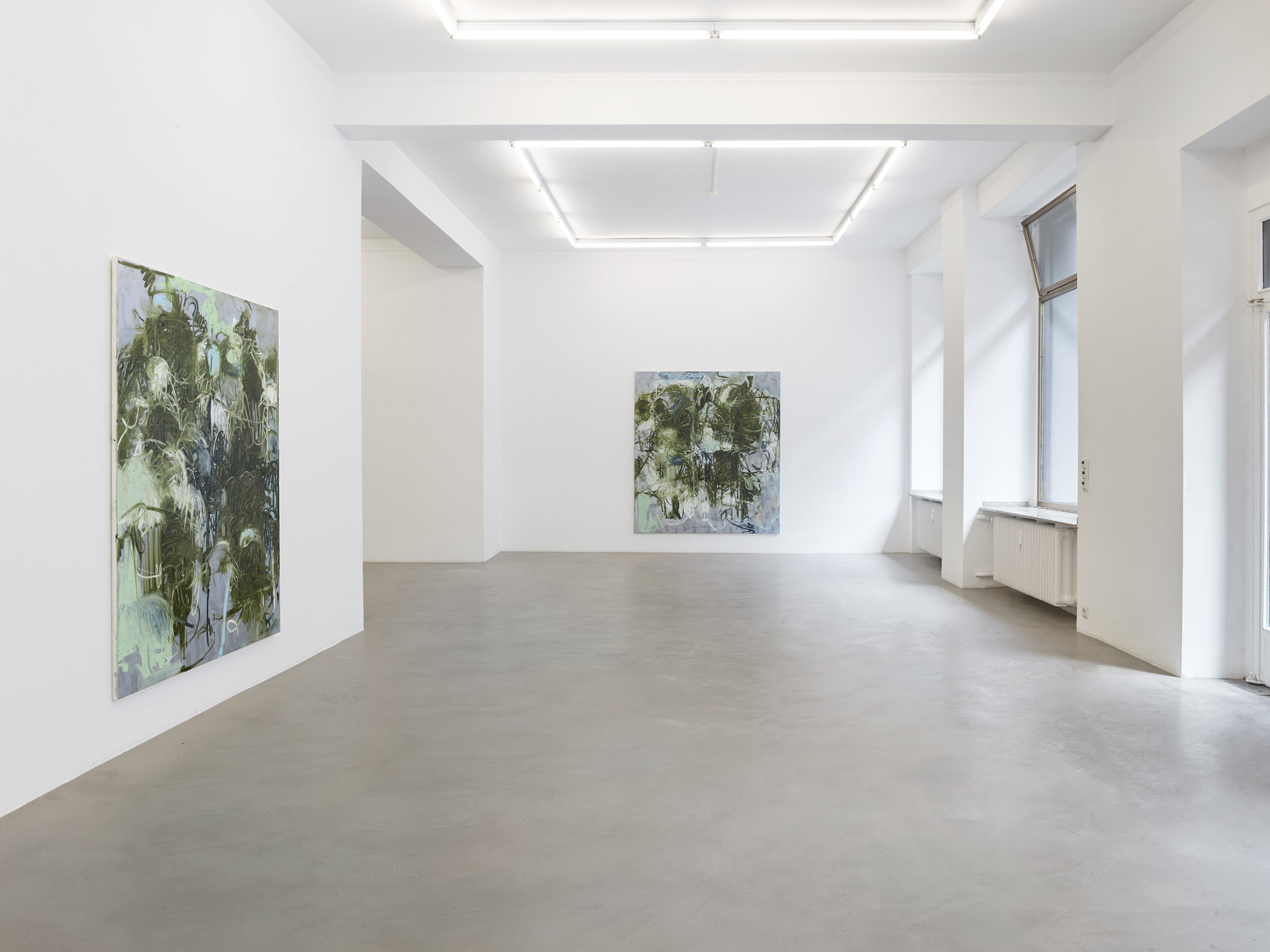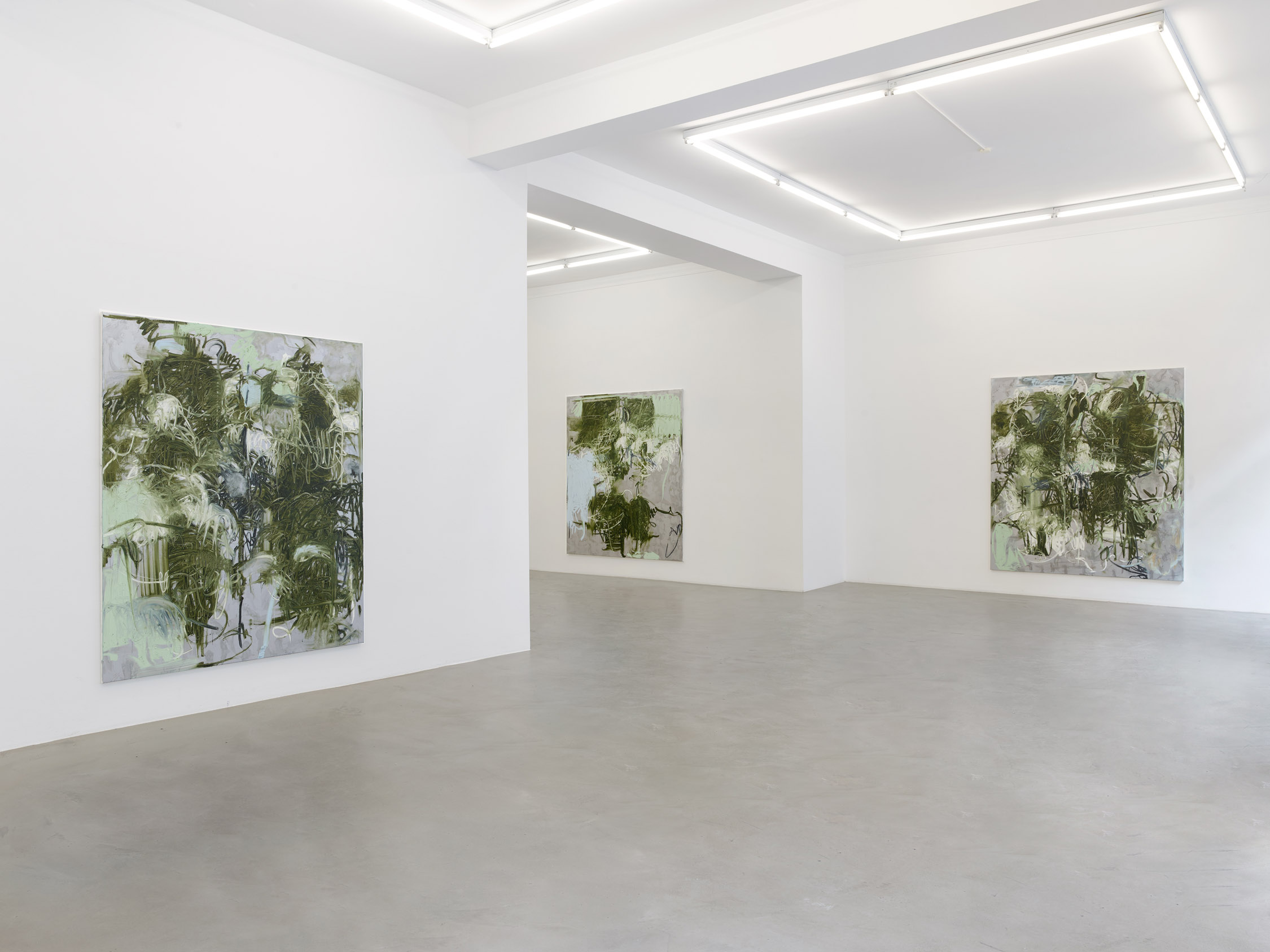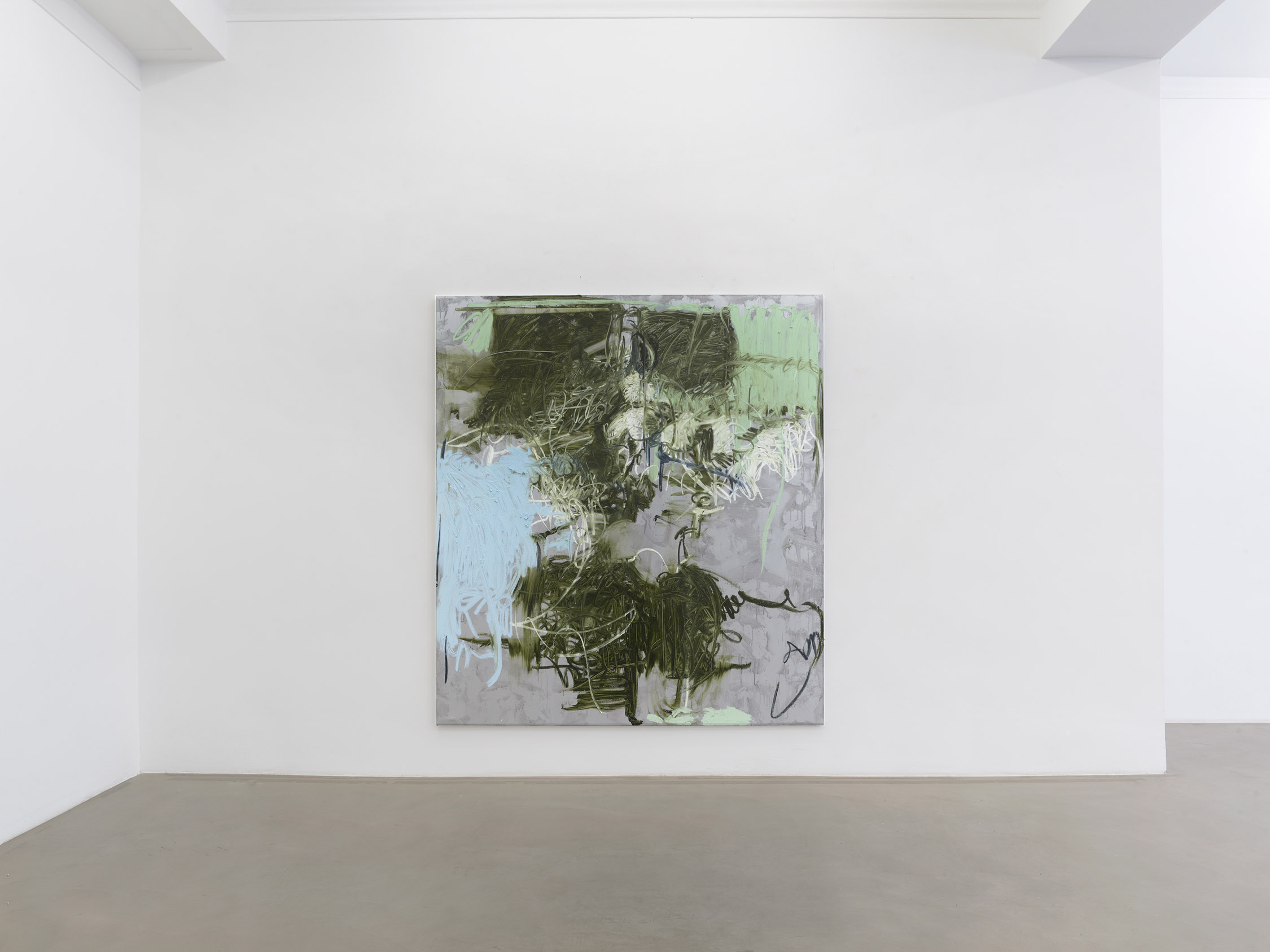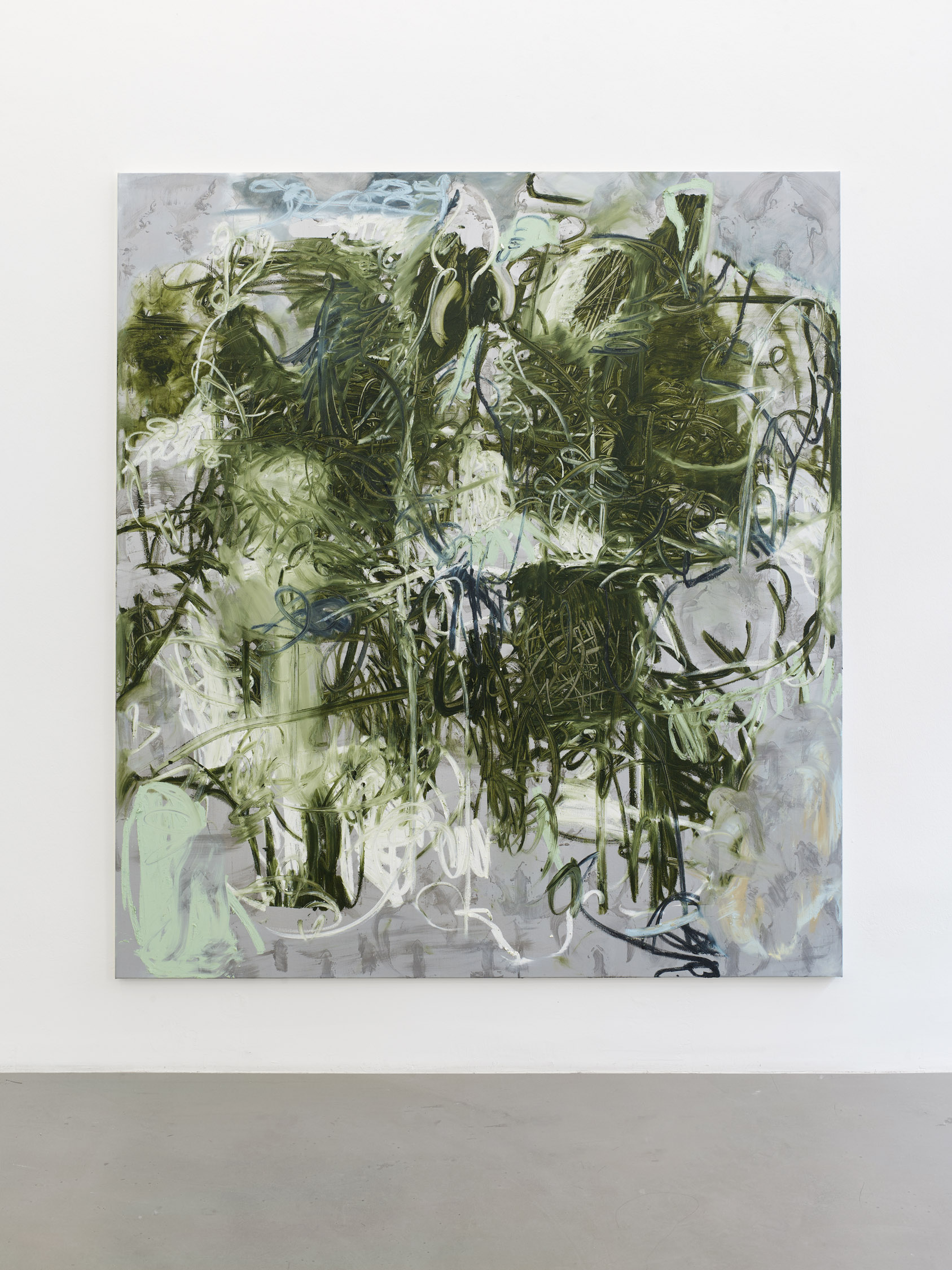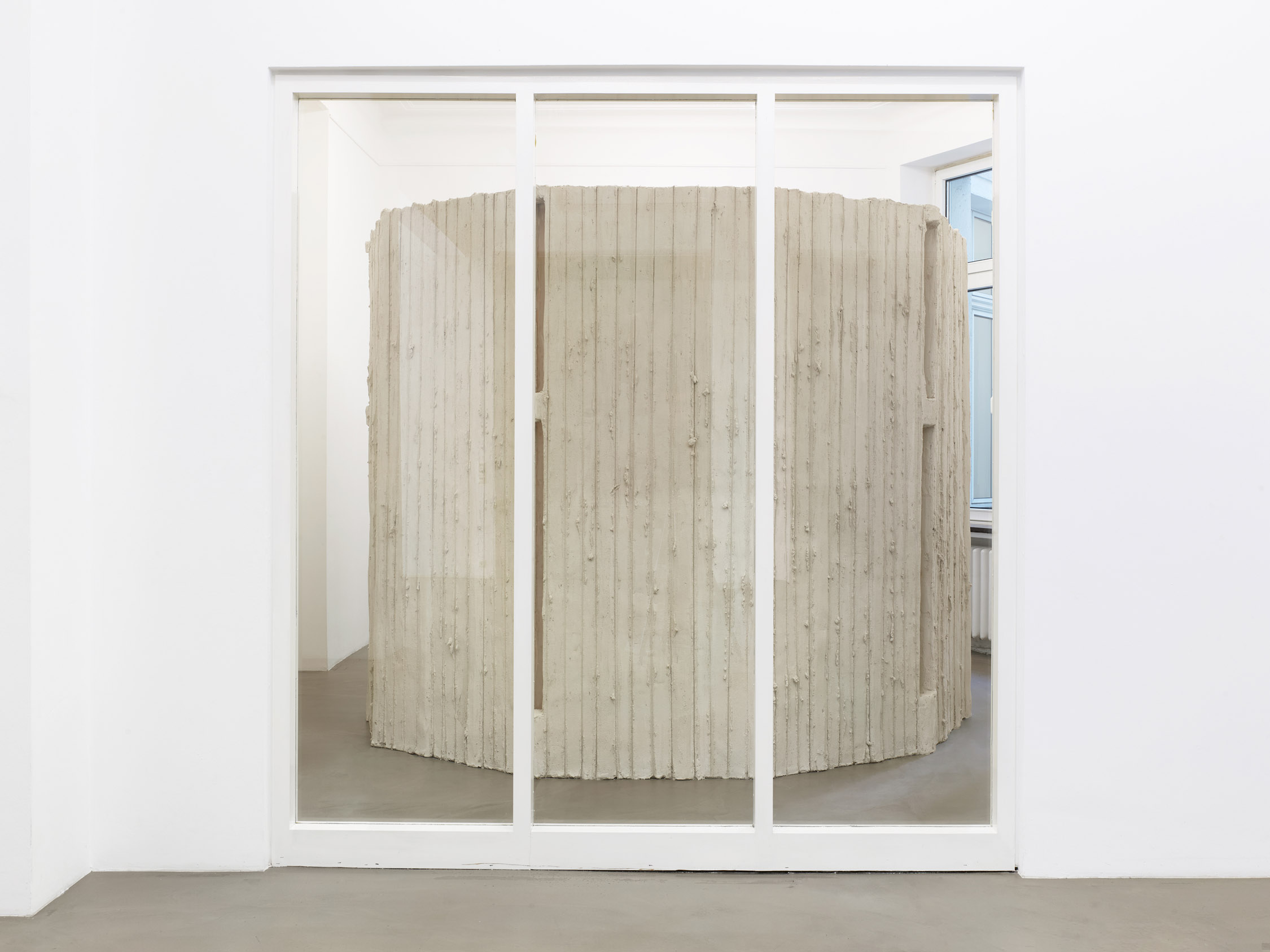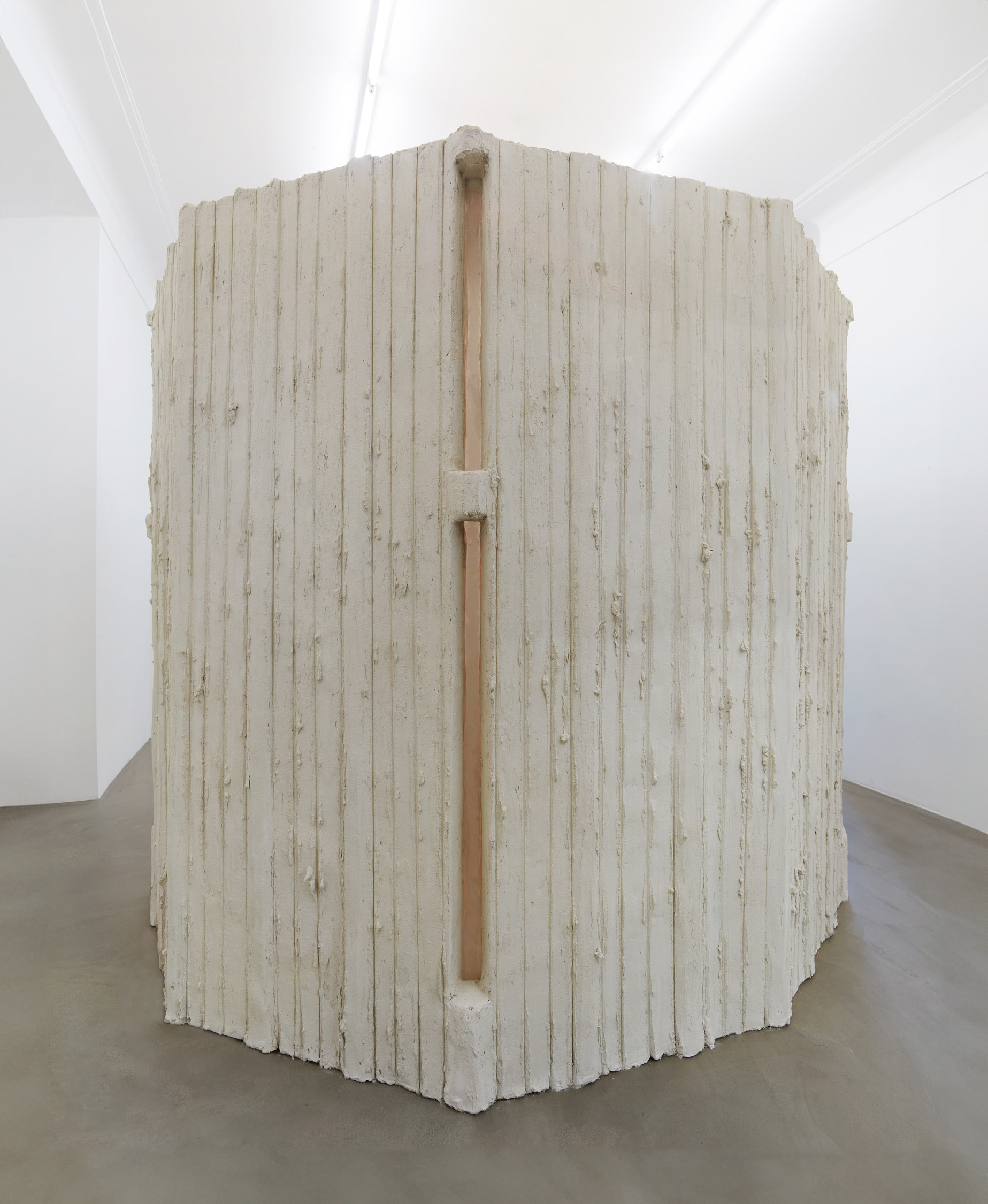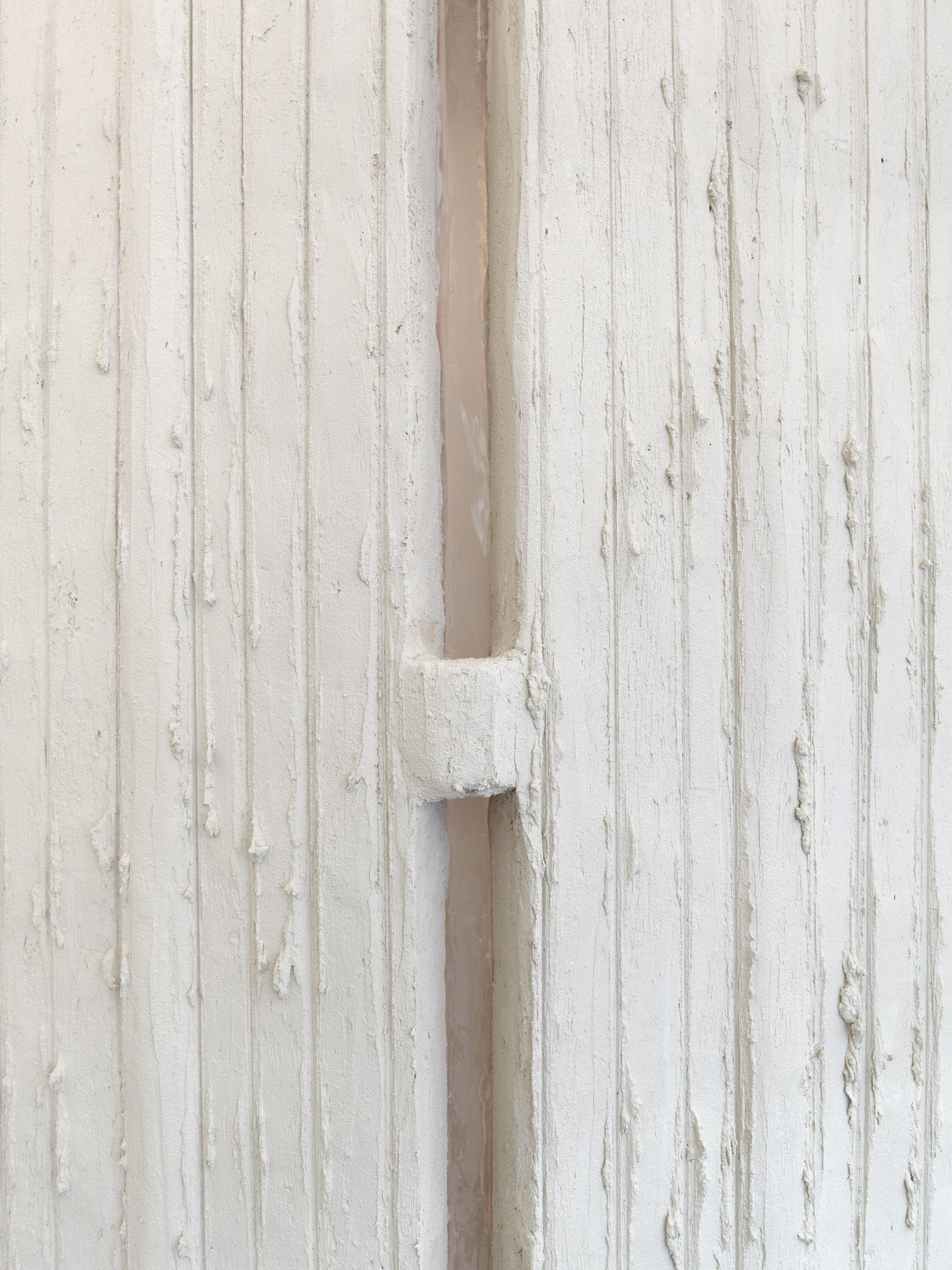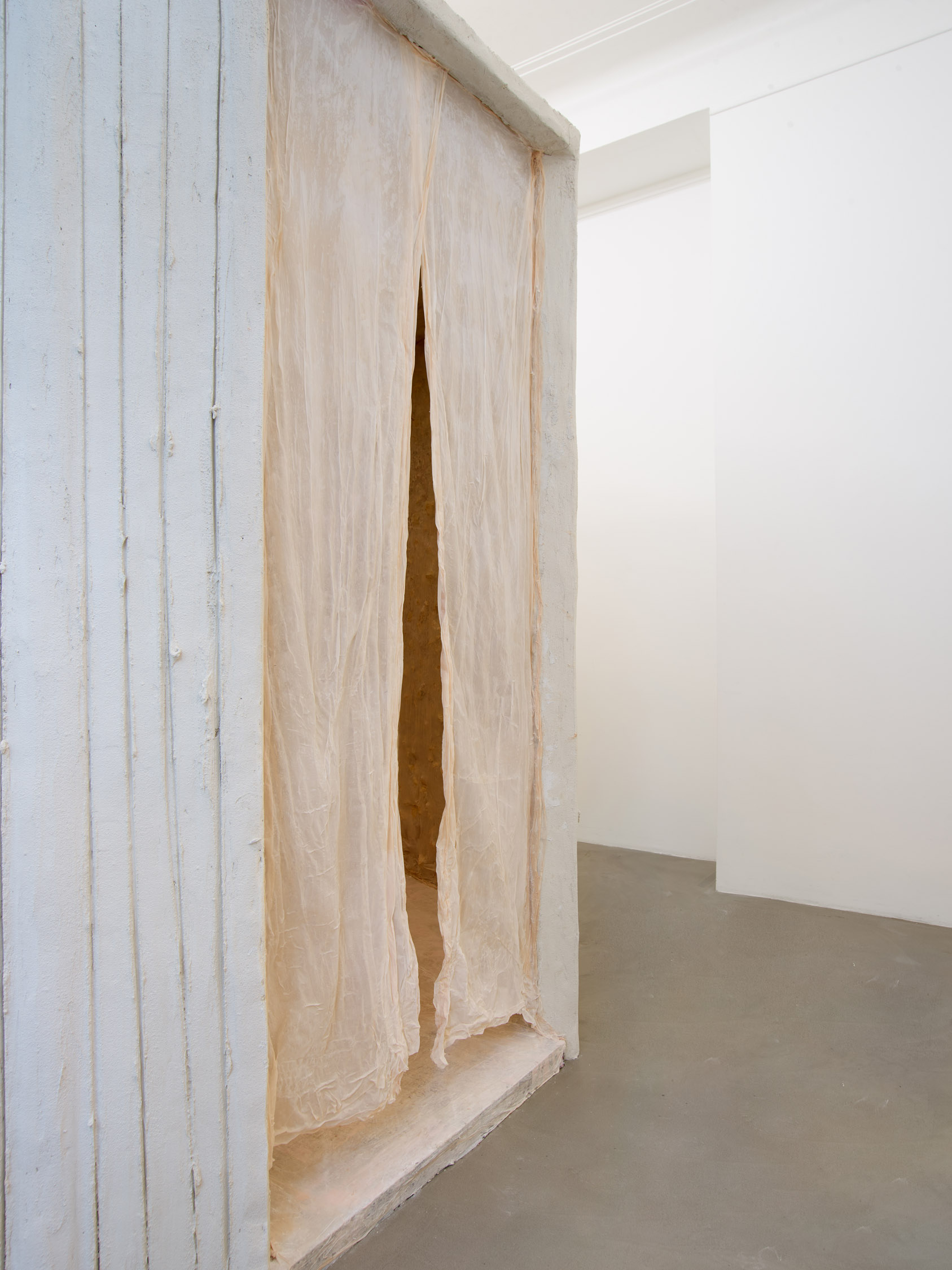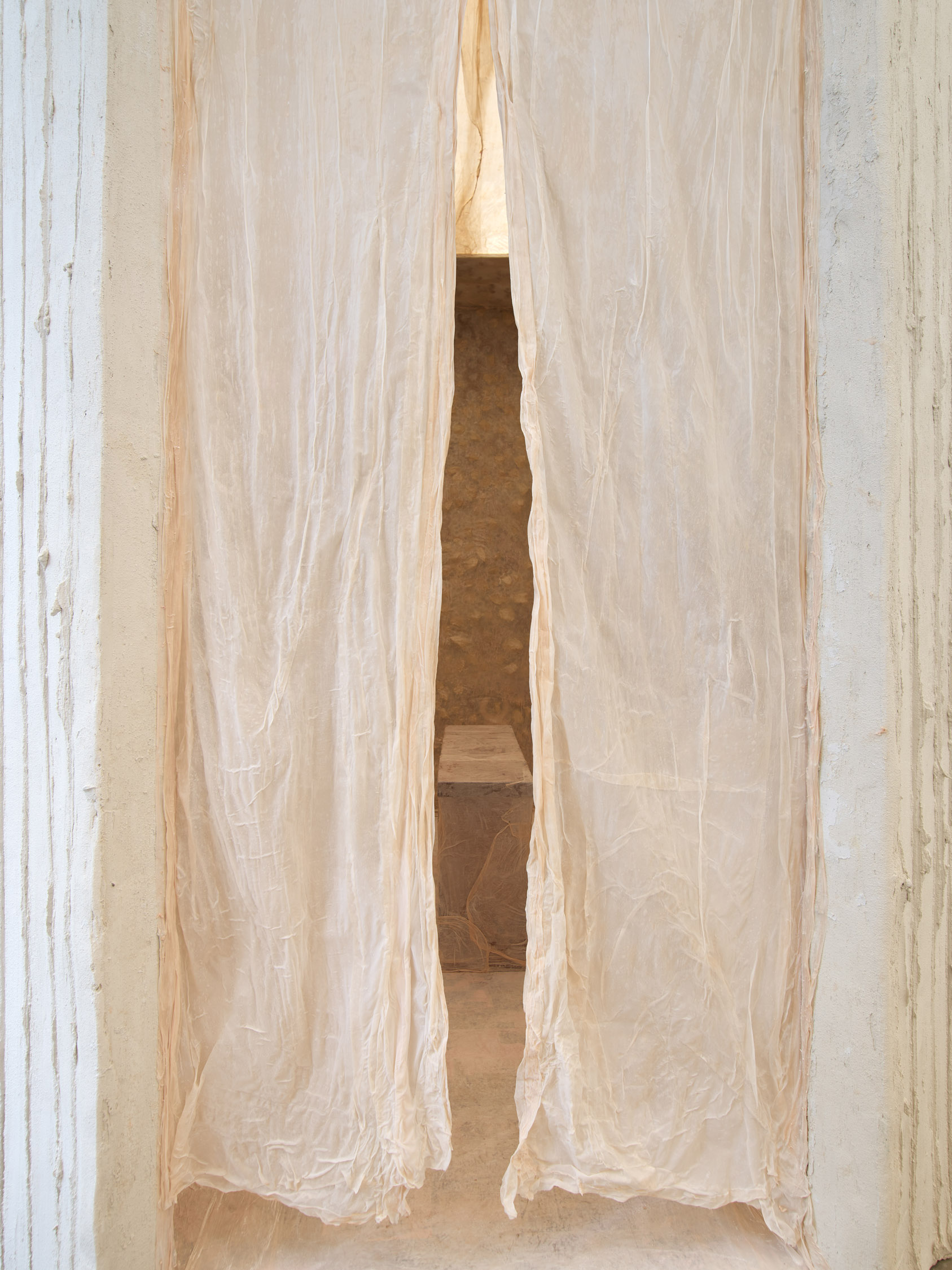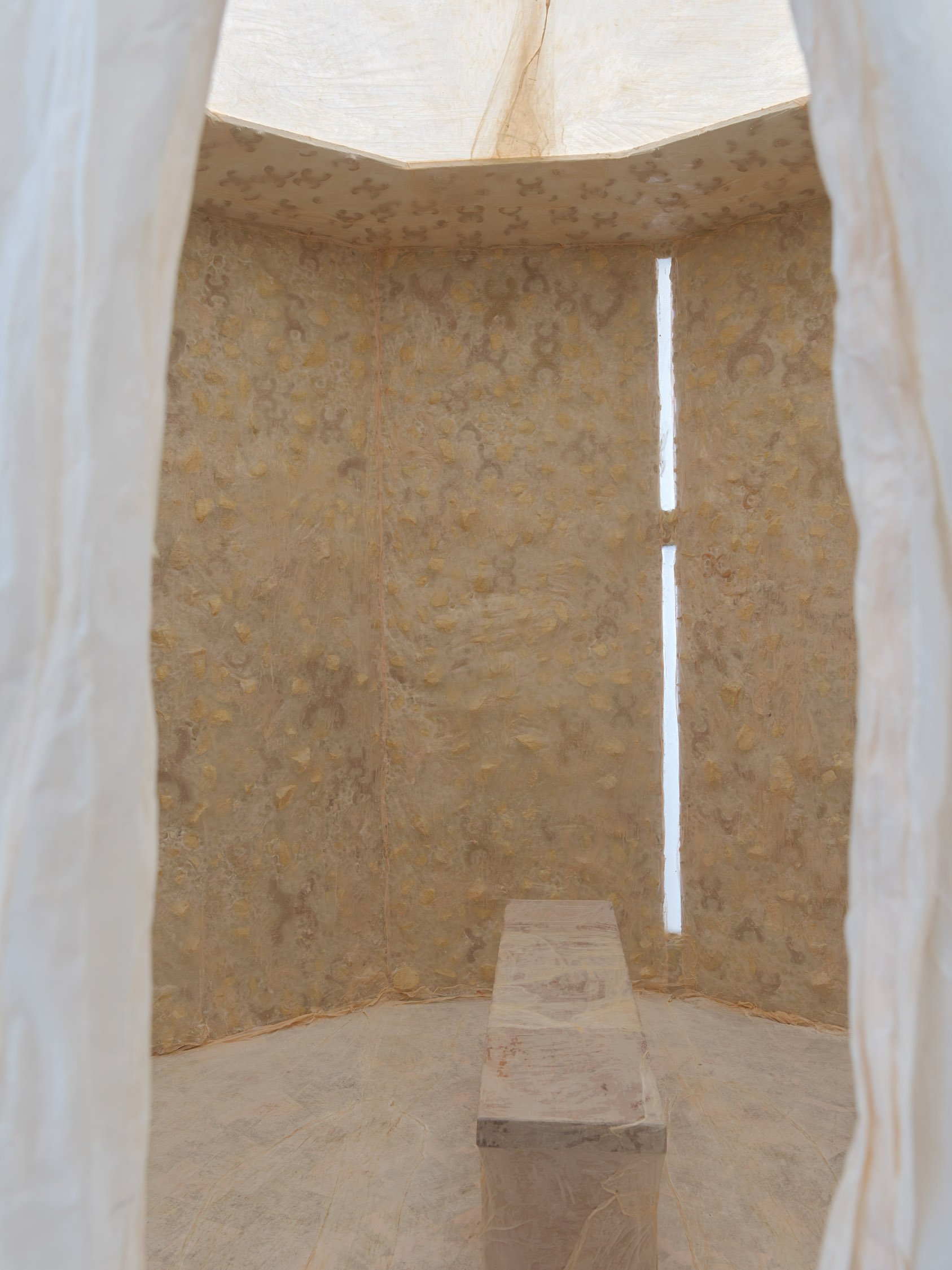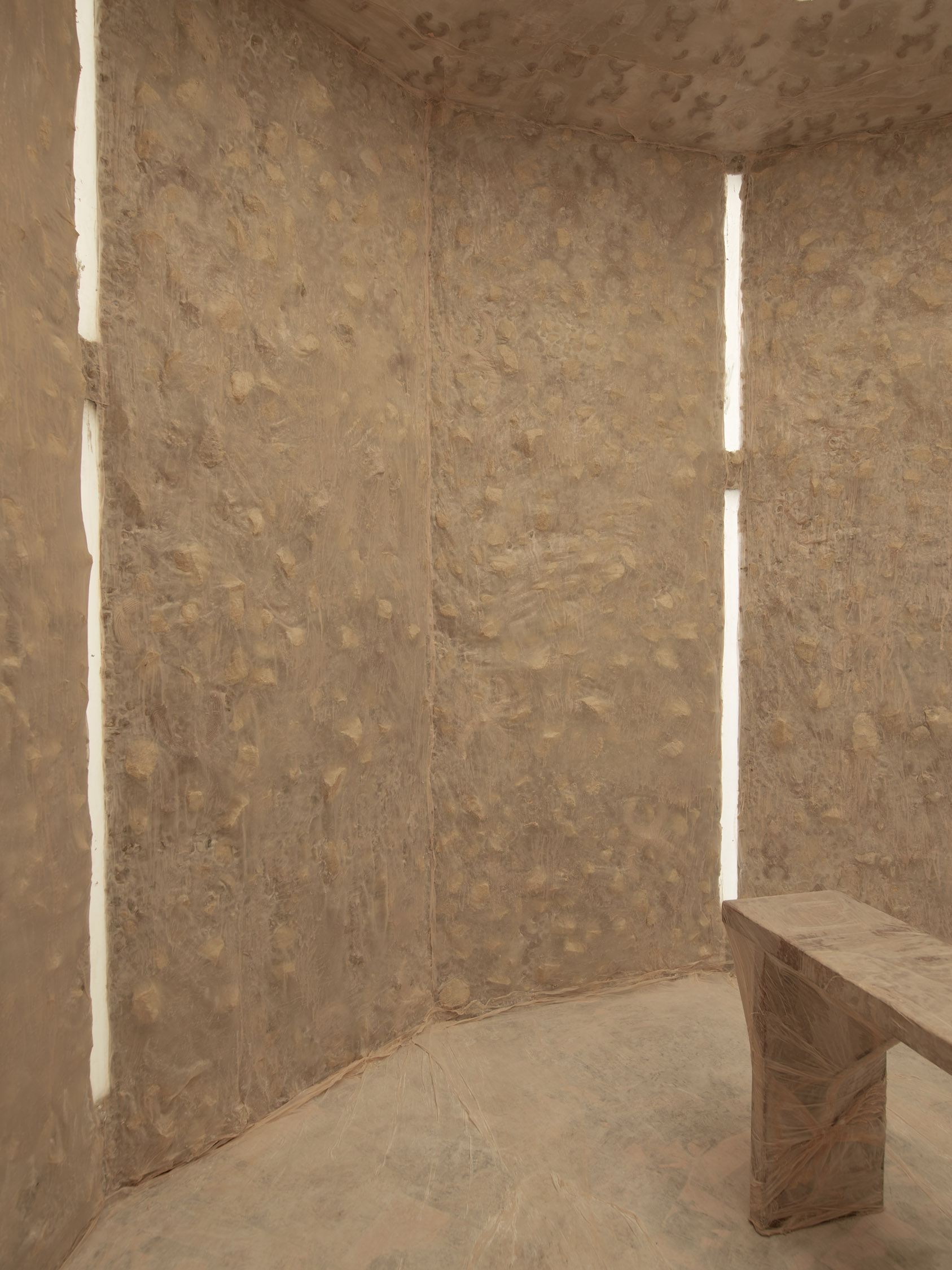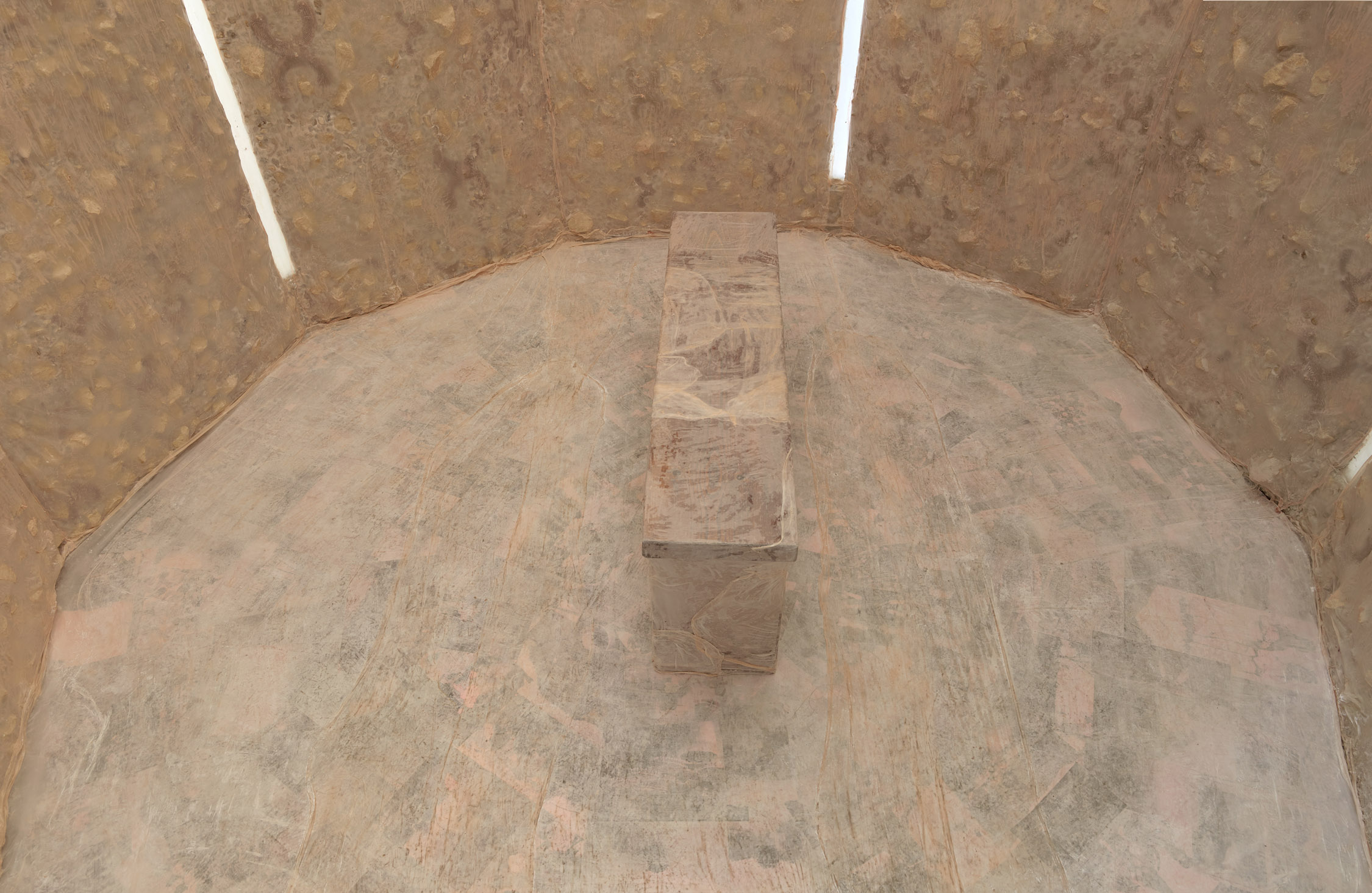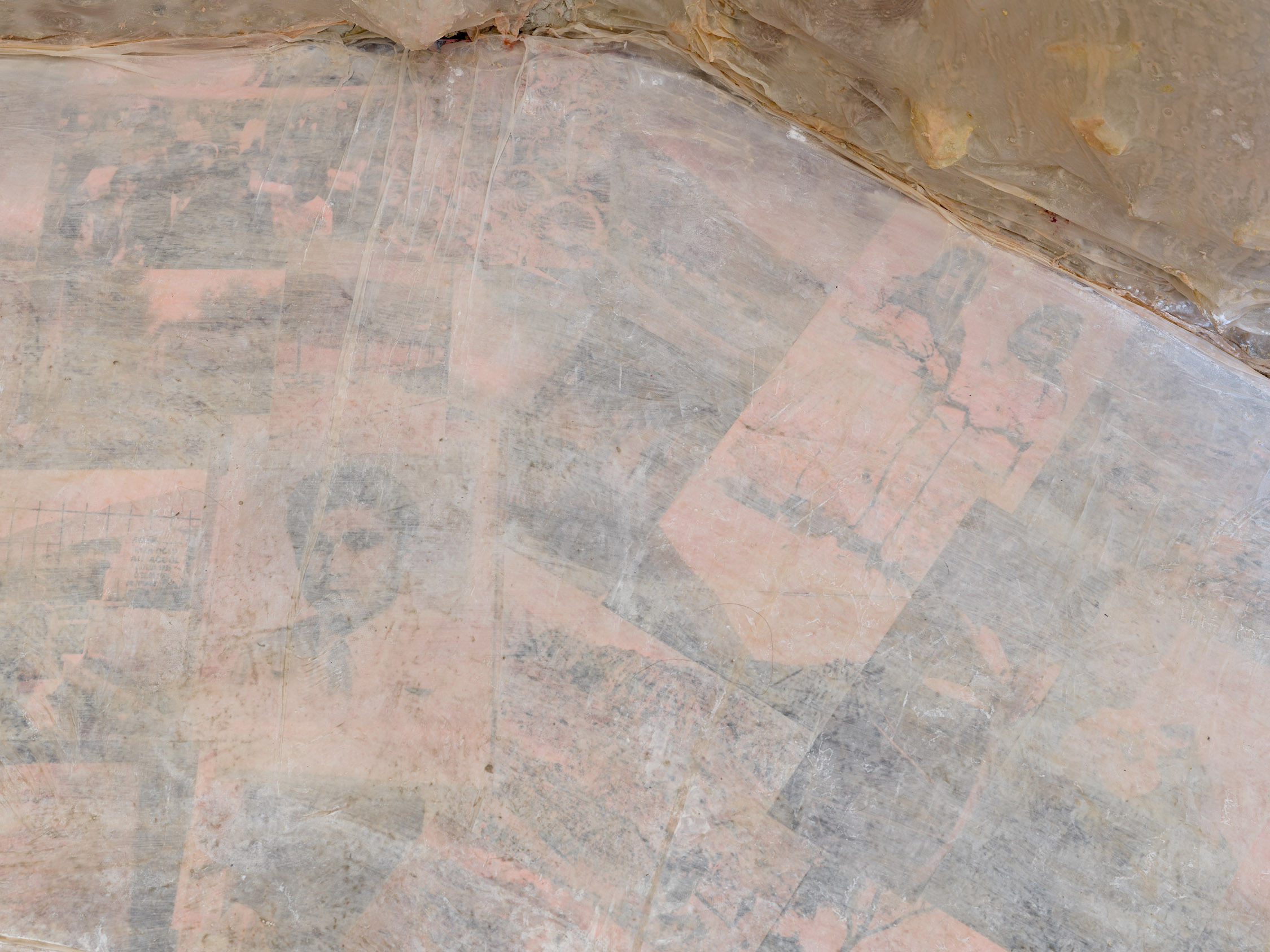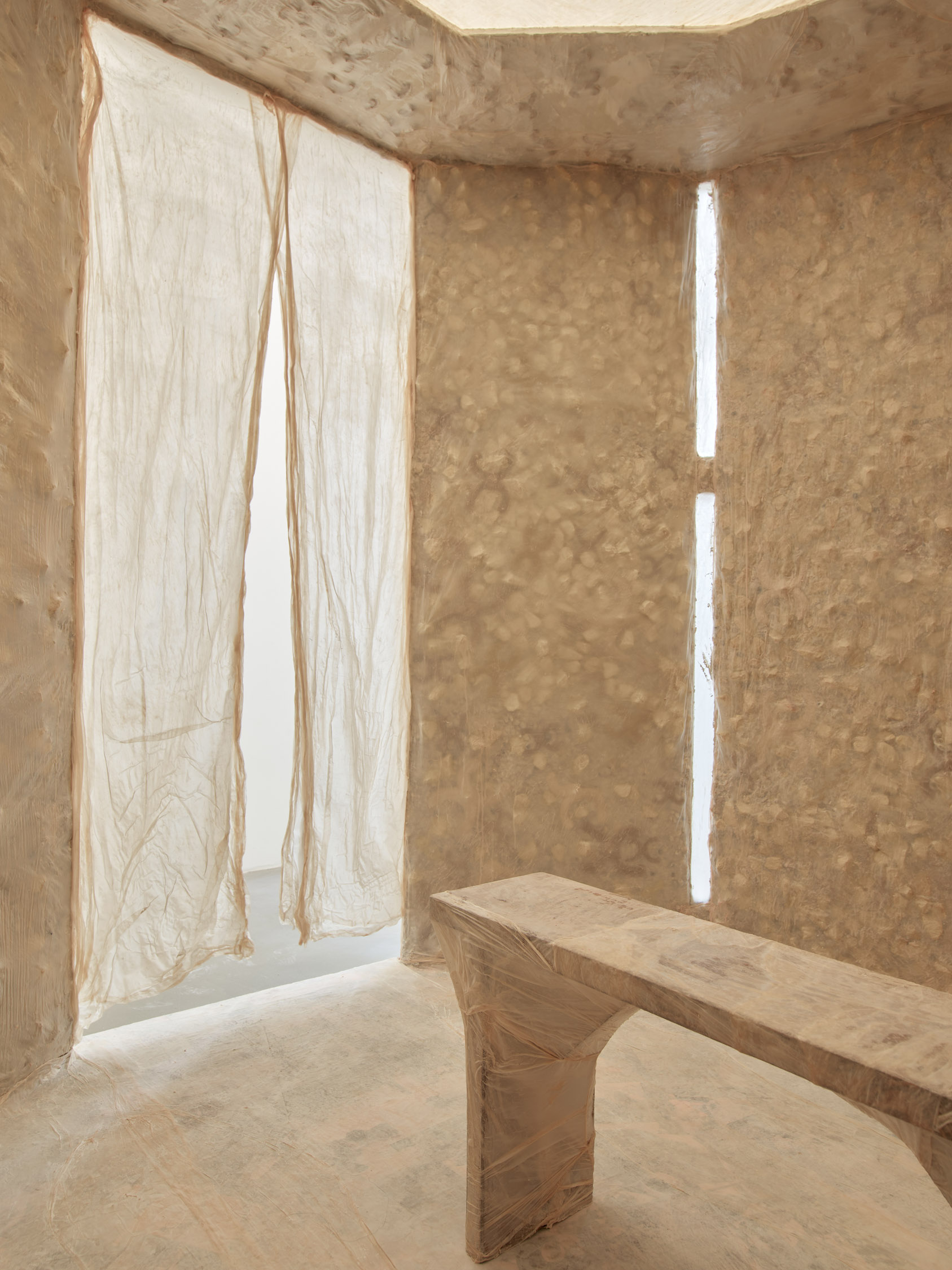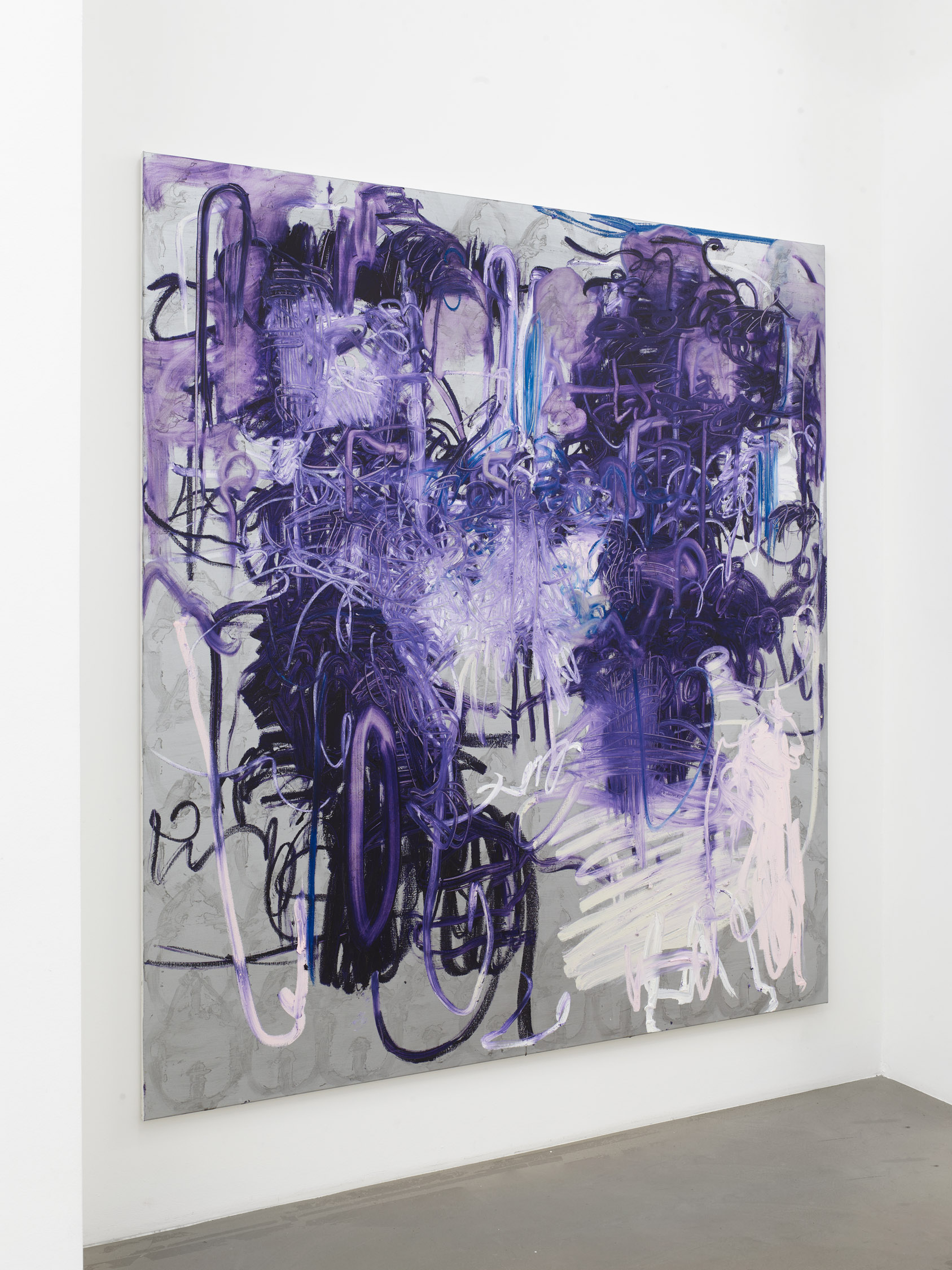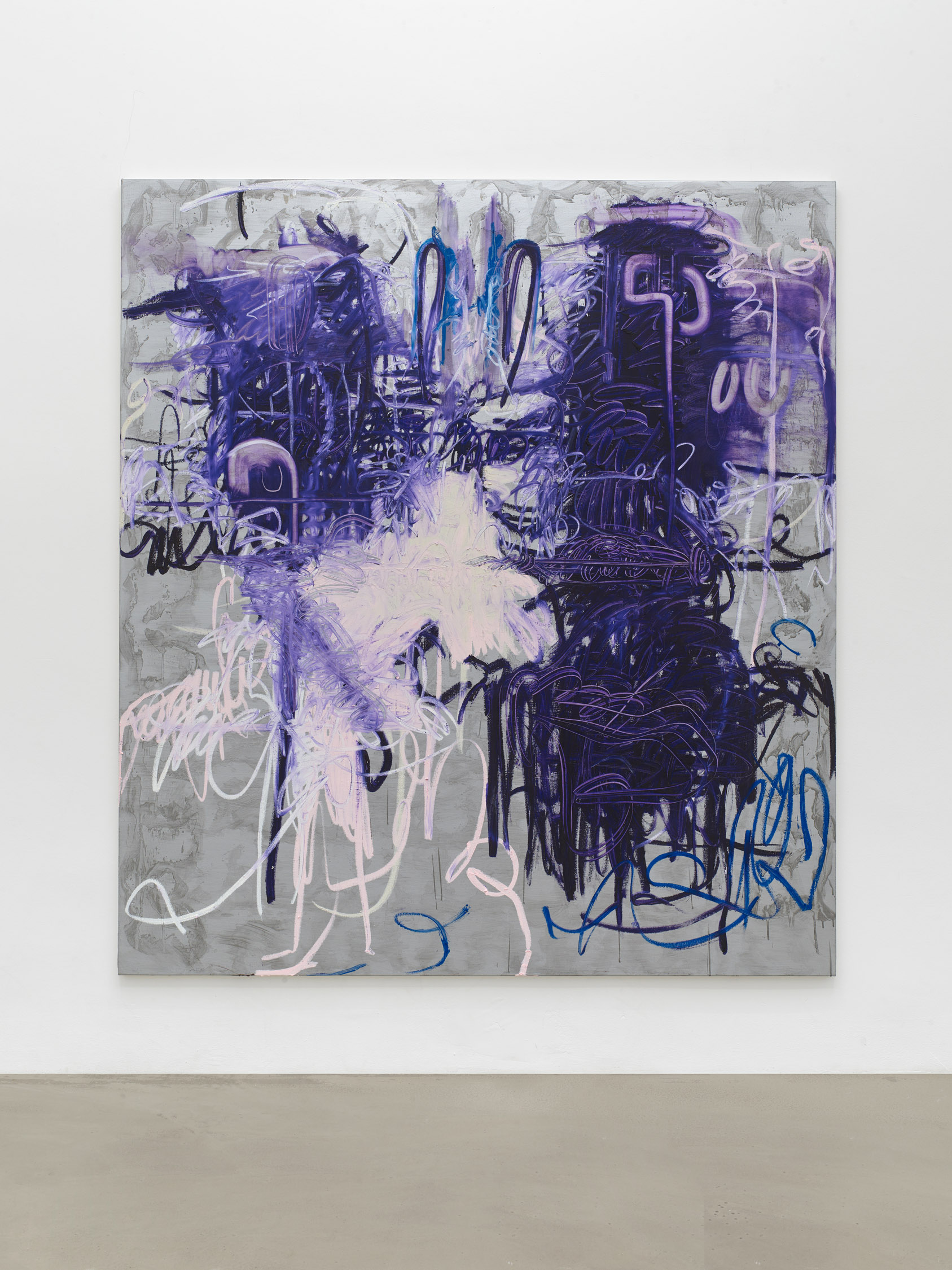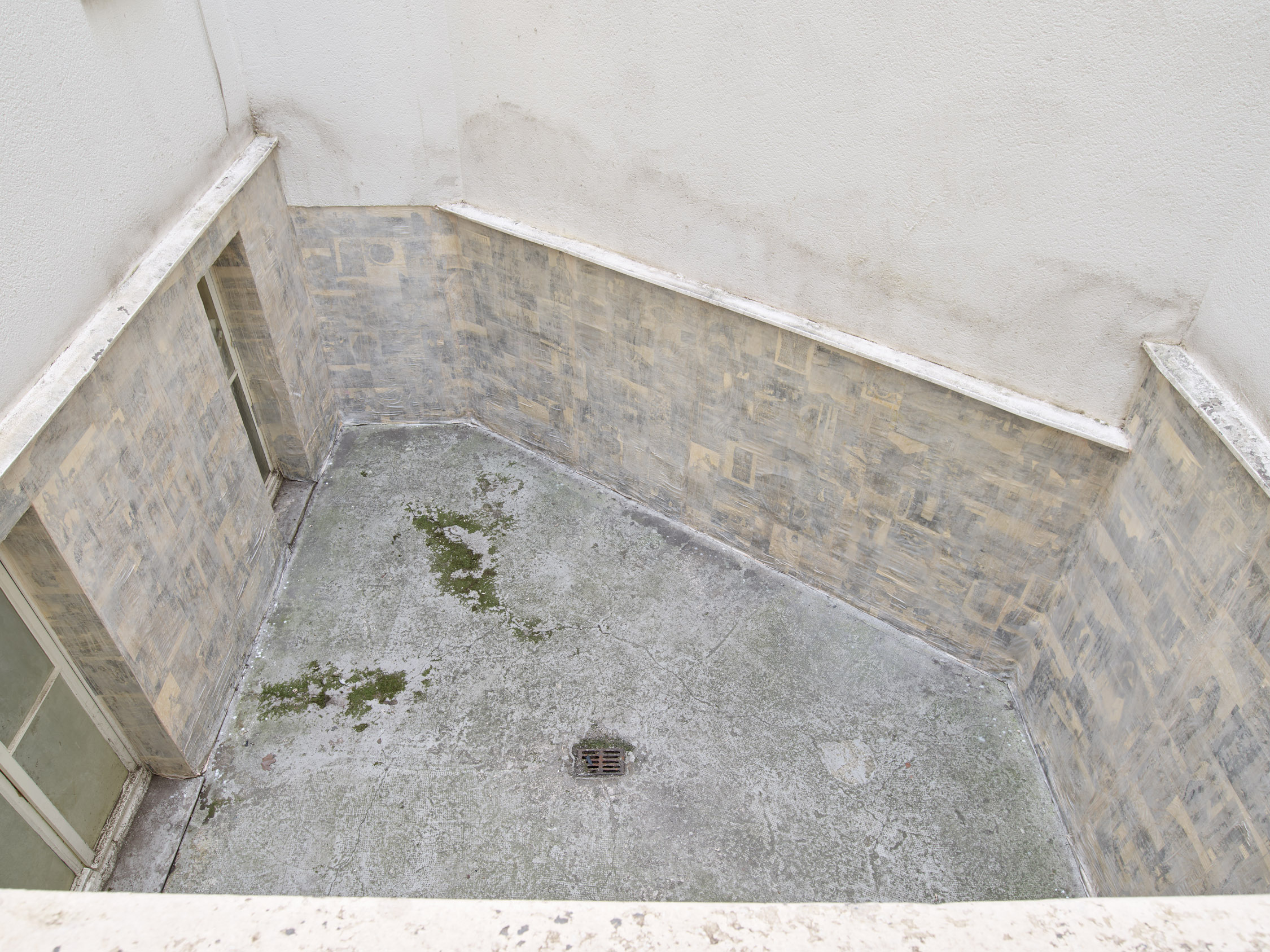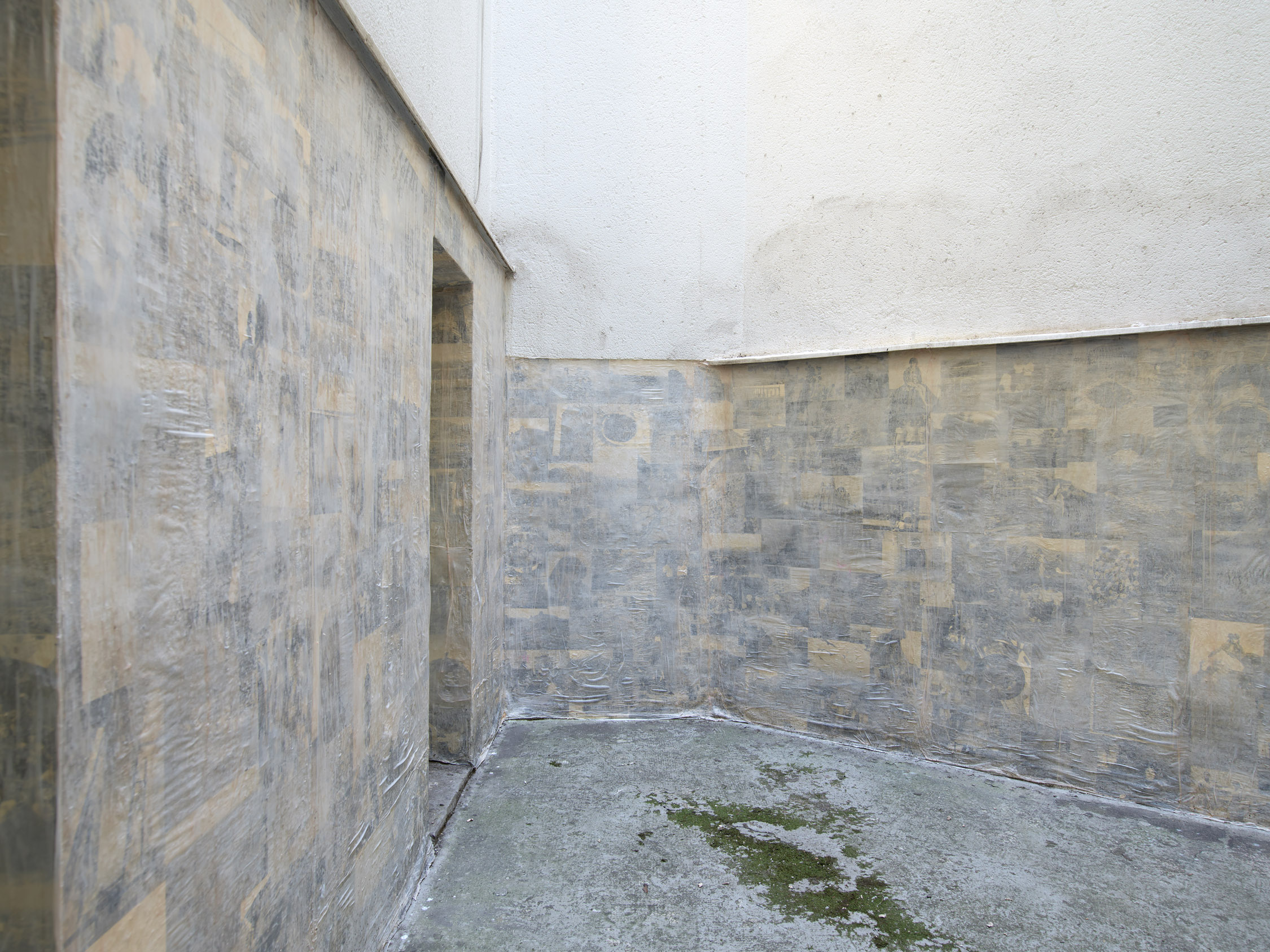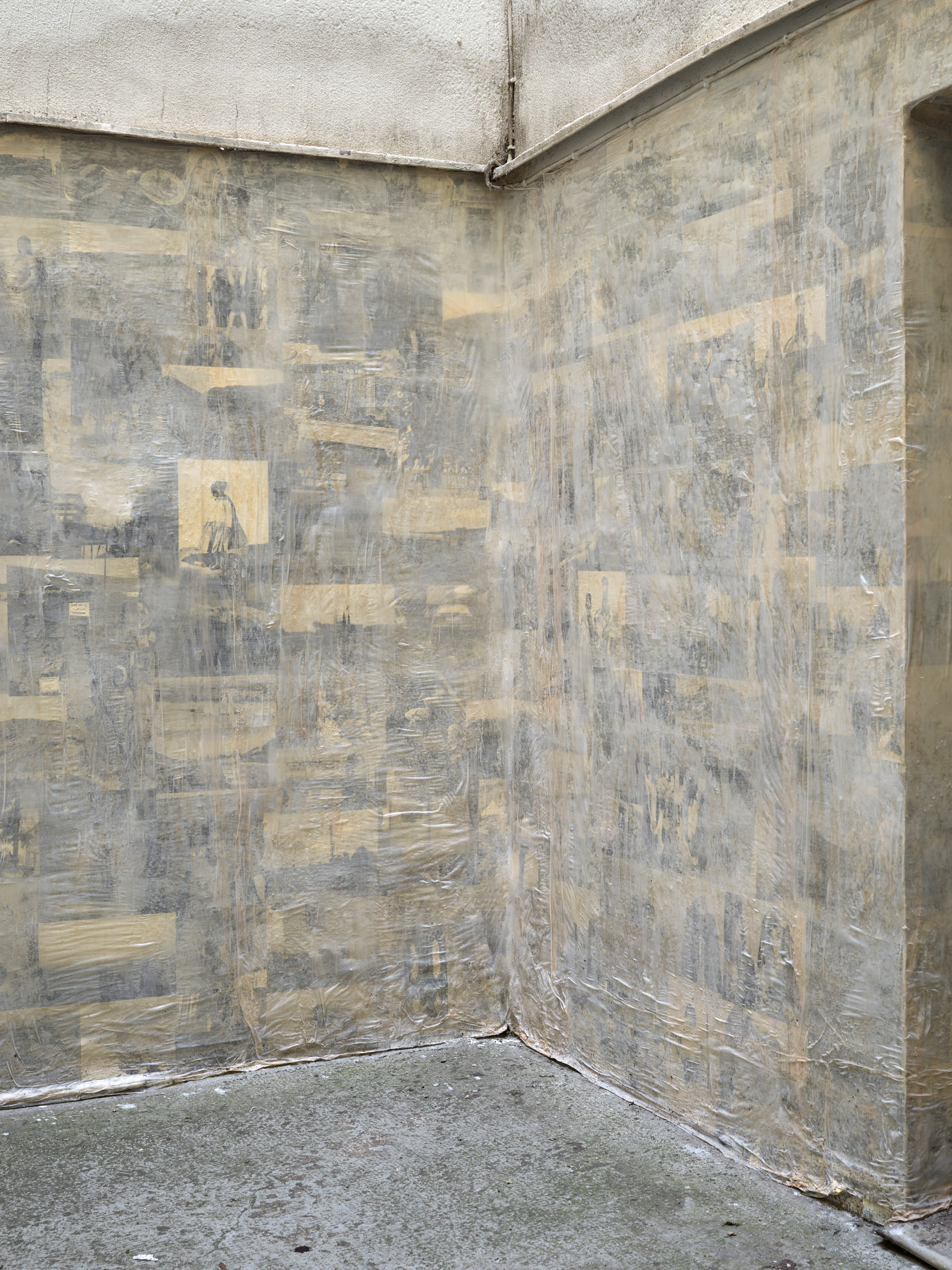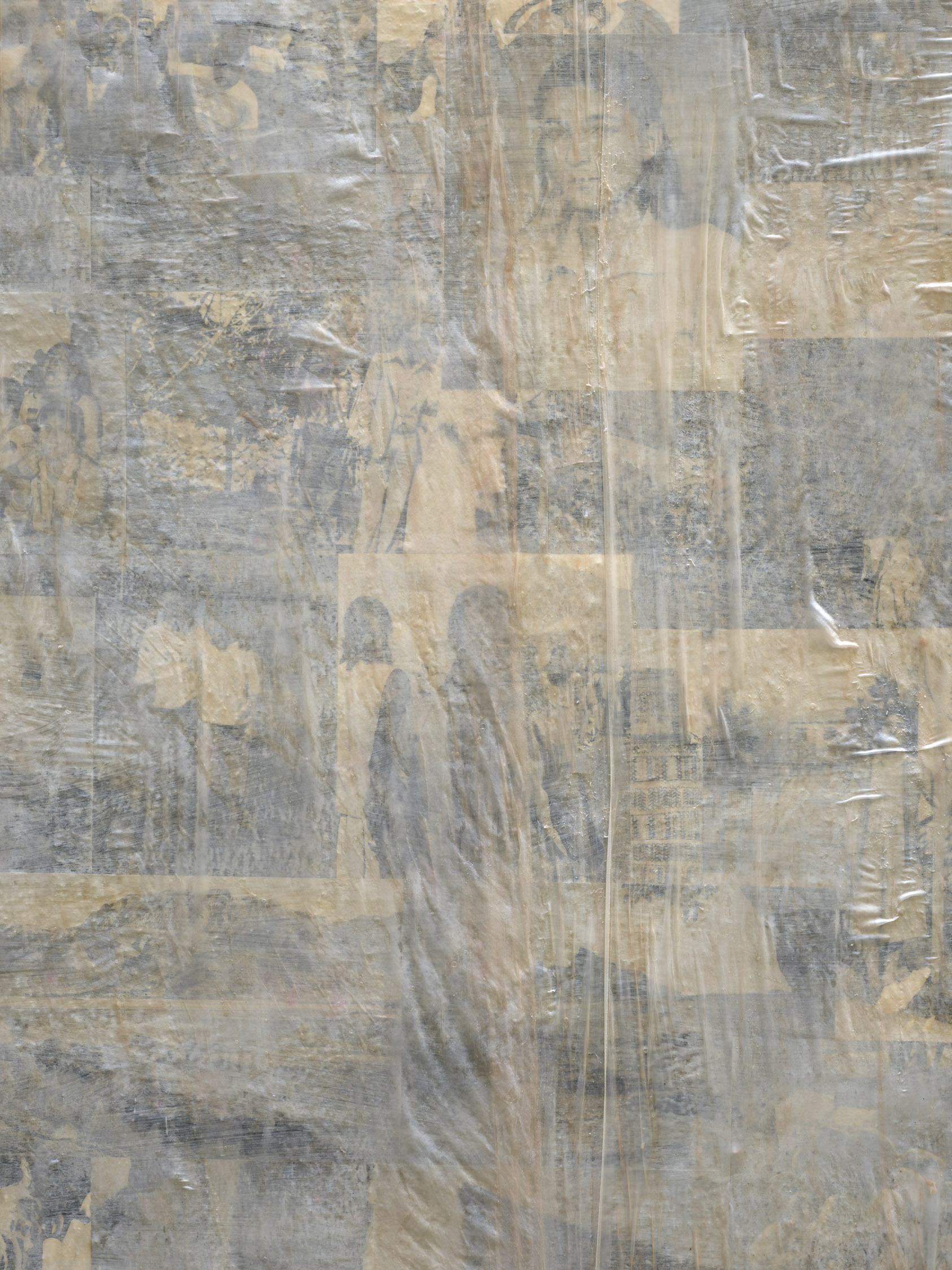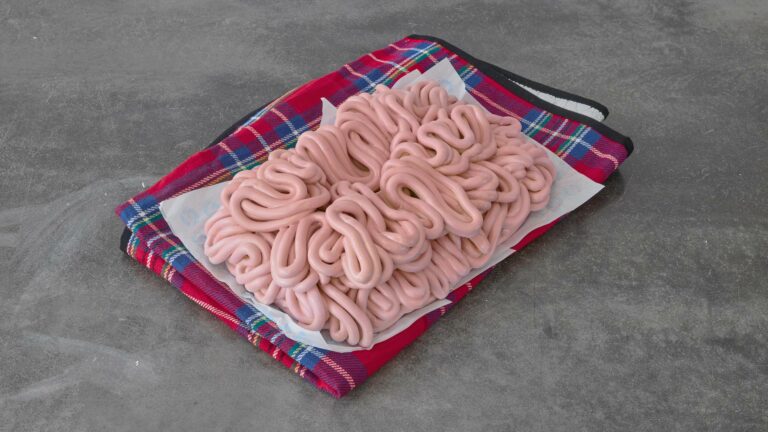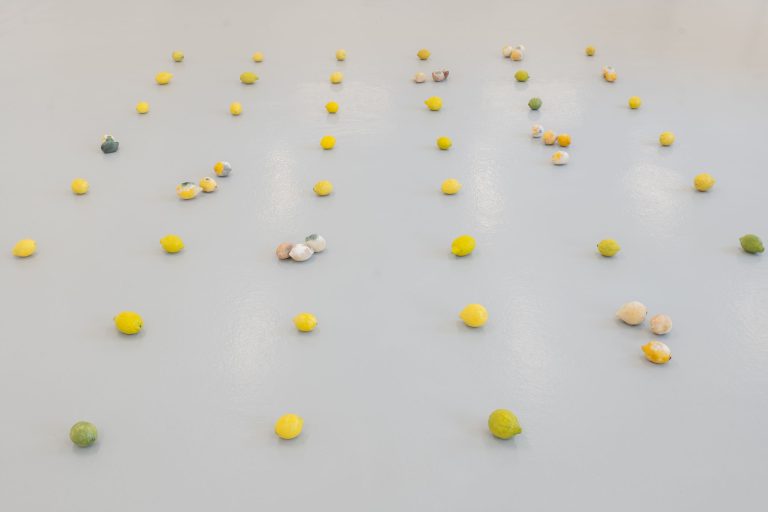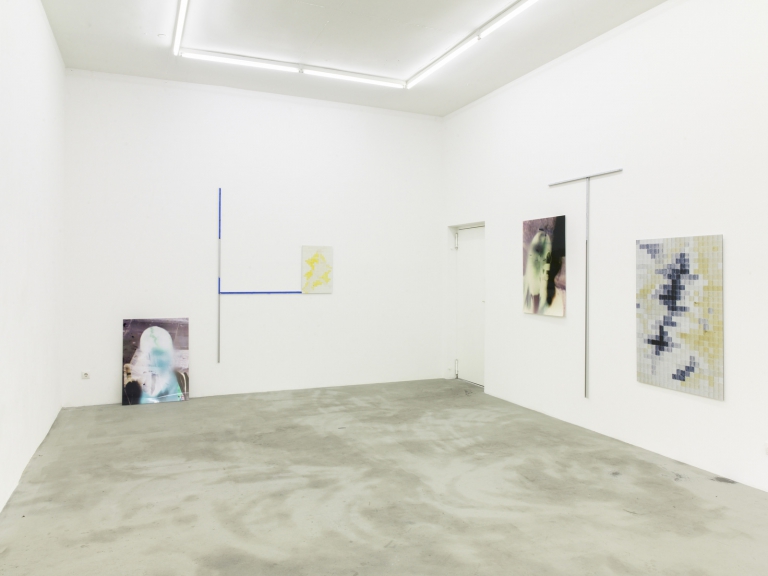Artist: Melike Kara
Exhibition title: chanting
Venue: Jan Kaps, Cologne, Germany
Date: June 5 – July 27, 2024
Photography: Simon Vogel / courtesy Jan Kaps, Cologne
For her third exhibition at Jan Kaps, Melike Kara has constructed a site-specific, decagonal Sanctum that, alongside a new series of paintings, provides deeper insights into her ongoing research and interests. Like many of her recent installations, the architectural structure illustrates the artist’s elegant balancing act between various themes such as representation, biography and politics. The Sanctum not only represents the contemporary craving for tranquility and peace, but also reconciles the search for solace with one’s past and upbringing, while challenging the maelstrom of contemporary activities that are constantly moving forward and ever-changing. The Sanctum becomes a tool for looking back, honoring its predecessors while making room for the new, which creates its own rhythm and song.
Enter the sanctum and remember those who came before you. Although she grew up in Germany, Melike Kara’s connection to her Kurdish-Alevi roots runs deep. Her family’s cultural and spiritual heritage continues to influence the artist’s research and artistic approach. Her grandmother Emine, who repeatedly appears in her video and photographic works, lived in a village that became a place of pilgrimage where various family members worked as healers and shamans. The Sanctum stands for the idea of a sacred journey, where one not only visits a place, but is also with someone — especially those who have already left us. While the overall structure incorporates stones and Kurdish patterns, the floor is paved with photographic images from the artist’s archive, which contains countless depictions of Kurdish life. Since 2014, Melike Kara has collected hundreds, if not thousands, of such images. Some she has taken herself, others have been sent to her or found in print, and so the Sanctum becomes a communal space that not only contains the idea of Kurdish life past and future, but also serves as a platform to expand the artist’s project to more than just a reference to her own heritage. More than that, the Sanctum functions as a kind of liberation that allows us to imagine and connect with what is happening today. In building this archive, Melike Kara has made the act of looking back an important part of her practice, but it has also always been a way to pave the way forward, to increase the ability to see what is in front of us by weaving the past into the present.
While her sculptures and installations include photographs depicting contemporary and historical Kurdish life, her paintings have become increasingly gestural and abstract. Using two or three color palettes, Melike Kara takes various Kurdish tapestry motifs from different regions and tribes as her starting point. In doing so, the artist repeatedly distorts and abstracts clearly recognizable forms or signs. In a process of detachment, the artist undermines the authority of existing narratives and is thus able to weave her own stories and patterns. In many ways, her artistic practice resembles the act of writing, in which she reshapes and reworks the narrative of her cultural heritage and sometimes even her own biography. The question of representation ultimately touches on both personal and political levels.
While memory, history and personal retrospection play an important role in Melike Kara’s practice, her references always serve as a platform for her own interpretations, reasons to create and build. It is a way of looking back in order to live forward, to keep moving and to use the experience of life, however subjective it may be, as a means of creating and inventing new forms of reflection. In this sense, the artist has always insisted on creating her own space and shaping her materials with a mixture of cultural, biographical and art historical references. And so Melike Kara keeps the flow between the different elements in her exhibition alive. Like a chanting of sounds, like extended heartbeats, concentrated attention on individual details that come together to form a whole. The singing is neither active nor passive — it is receptive, like Melike Kara’s work, and channeled into the present.
Melike Kara, born 1985 in Bensberg, Germany. Her work has been exhibited internationally including the Schirn Kunsthalle Frankfurt; Kunst Halle Sankt Gallen; the Kunsthalle Zürich; the Kunstverein Düsseldorf; the Museum De Fundatie, Zwolle; the Philara Foundation, Düsseldorf; the Frac des pays de la Loire, Nantes; the Mead Gallery | Warwick Arts Centre, Coventry; the Neue Galerie Gladbeck; the Ludwig Forum Aachen; the Kölnischer Kunstverein; the Wiels Contemporary Art Centre, Brussels; the Kunstverein Göttingen; the Witte de With Center for Contemporary Art, Rotterdam; the Yuz Museum, Shanghai and the Dortmunder Kunstverein in Dortmund. She participated in the 58th Carnegie International in Pittsburgh, curated by Sohrab Mohebbi.
